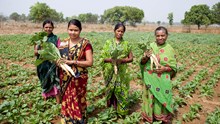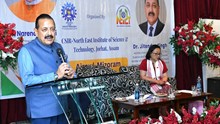
Extensive use of fertilizers in agricultural grasslands drastically reduces the population of pollinators and the diversity of flowers, reveals research from Rothamsted's Park Grass Experiment. As the world's oldest ecological study site, it offers critical insights into the trade-offs between boosting agricultural yields and maintaining ecological health. Published in npj Biodiversity, the study highlights the urgent need to balance productivity with the preservation of vital ecosystems.
A two-year study conducted by researchers from the University of Sussex and Rothamsted Research reveals a significant trade-off regarding the use of fertilizers. While fertilizers, particularly those containing nitrogen, phosphorus, and potassium (NPK), enhance grassland yields, they also lead to a substantial decline in the diversity and population of pollinators and flowering plants. This decline poses a threat to crucial ecosystem services such as pollination, which are essential for sustainable agriculture.
Key findings reveal that pollinator population in untreated areas was nearly double that of plots receiving high fertilizer inputs. Bumblebees, honeybees, and other important pollinators were significantly more numerous in regions with little to no fertilizer application. Similarly, the variety of flowering plants decreased as soil fertility increased. Notably, untreated plots supported nine times more bees—a critical group of pollinators—than heavily fertilized areas
The study also highlights the ecological importance of nitrogen-fixing legumes, such as clover. These plants not only support pollinator populations but also enhance soil fertility, providing a sustainable alternative to synthetic fertilizers. Plots that received nutrient enrichment, excluding nitrogen, demonstrated a better balance between crop yield and biodiversity, suggesting a potential pathway for sustainable grassland management.
However, the findings reveal a complex dilemma. Increasing soil fertility can boost grassland yields but may come at the cost of biodiversity. The researchers propose financial incentives as a necessary measure to compensate for the economic losses associated with reduced fertilizer use.
They advocate for strategies such as minimizing nitrogen inputs, applying lime to reduce soil acidity, and integrating legumes into grasslands. These measures could help preserve biodiversity while maintaining agricultural productivity.
This approach aligns with ongoing agricultural reforms in the UK and the European Union, which aim to promote environmentally sustainable practices.
“This study highlights the need for policies that balance agricultural productivity with ecosystem preservation,” said lead author Dr. Nicholas Balfour. “By reducing fertilizer inputs and integrating biodiversity-friendly practices, we can achieve multifunctional landscapes that benefit both farmers and the environment.”
The Park Grass Experiment, started in 1856 at Rothamsted in England, is the world’s longest-running ecological study, now 169 years old. Initially focused on improving pasture productivity with fertilizers, it has grown to explore broader ecological and environmental questions. Today, it provides valuable insights into sustainable farming and biodiversity.
















